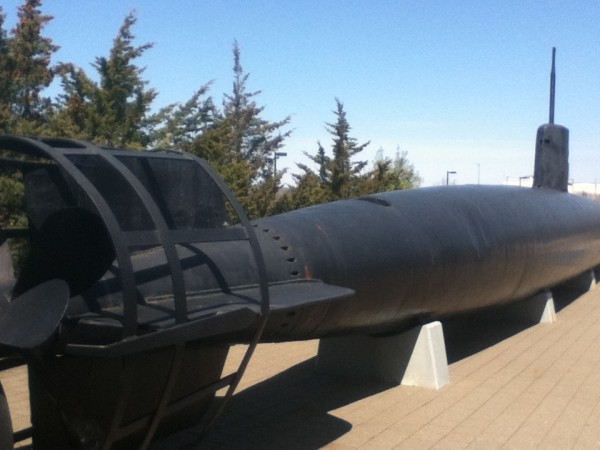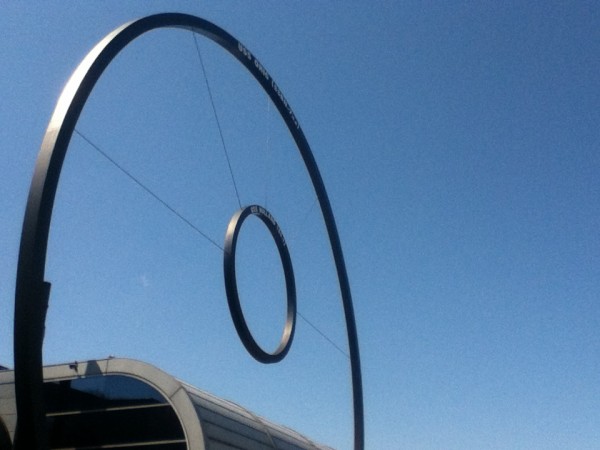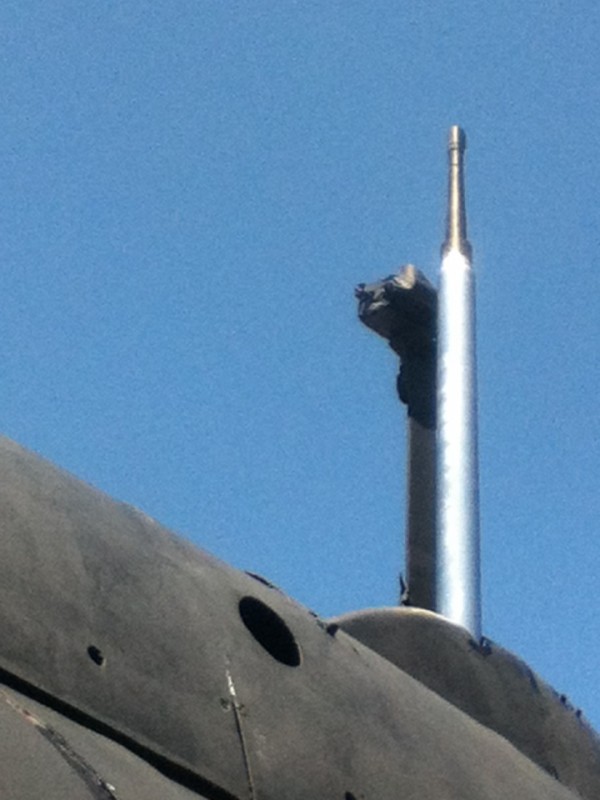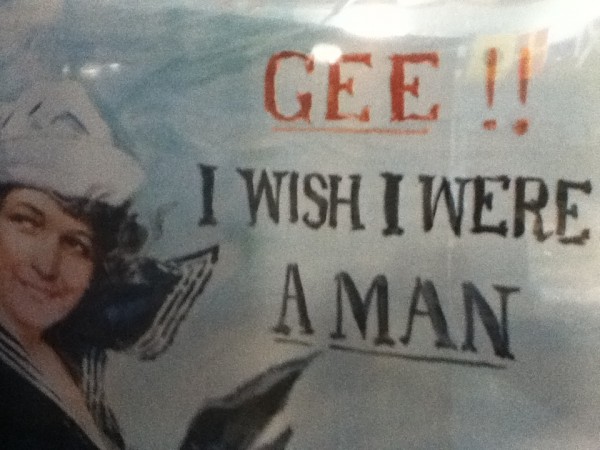If one of your favorite movies was Das Boot, a tense German fictional film about a remarkable submarine crew during combat operations in WWII, you would love a visit to the Naval Submarine Museum next to the US Submarine Base in Groton, Connecticut on the Thames River. Outside the museum is this two man Japanese “Type A” sub, used in Pearl Harbor and throughout the war, fortunately without much efficacy.
We climbed in and out of the hatches in the first nuclear sub in the American Fleet, the SSN Nautilus. SS denoting a sub, the N denoting nuclear powered. We played with the periscope, putting our rig in the sights for a torpedo launch. Fire in the Hole!!! Able to remain submerged longer than diesel-electric subs, she travelled geographically well beyond the limits of other subs, including a trip to the North Pole in 1958. Her propeller system was too loud to truly run silent with the advent of improved sonar soundings, so she was alone in her class. The Ohio class is what the US runs now, which are remarkably larger. This image shows the difference in circumference between SSN Nautilus and the current Ohio class.
A great exhibit featured the development of underwater listening systems. The “Poing…Poing….Poing” sound of the sonar creates so much drama in movies involving the hunt for a sub. It also became outdated by the coastal “Sound Surveillance System (SOSUS)”, that could pinpoint by triangulation the location of Soviet subs. The Soviets didn’t know we had this technology and we used it to our advantage, especially during the Cuban Missile Crisis, capturing two of the three subs heading for Cuba. Because of an American spy working for the Soviets, John Walker, they learned our secret, yet fortunately near the end of the Cold War. However, that technology, decommissioned beginning in 1992, is used for good animal science now: whale tracking by scientists trying to preserve the species (according to the military).
As opposed to the testing for the improved underwater sound stalking technology (LFA Sonar) which is so loud it allegedly causes whales to stress out and beach themselves (according to Steven and other whale advocates).
12 years ago, my son, my brother Rick, and I toured the USS Growler, a small sub, even more tiny and claustrophobic, tied up next to the Air Force Carrier Intrepid, all part of a museum in New York City Harbor. There you can see the Blackbird (first jet to fly at the speed of sound (Mach 1). It can reach Mach 3, or 33 miles per minute. It remains the fastest jet existing although built in 1964, although rocket fueled jets can exceed these speeds. The most interesting part of these exhibits is chatting with the Veterans and current soldiers who work with this war-oriented technology on a daily basis, and then to consider how important these technological advances have been as they have morphed into our everyday technology.
…and then there is the propaganda that was developed in that period, good for a laugh anyway.
“We can do it!” Wasn’t that Obama’s first presidential campaign’s slogan? I wonder if Rosie the Riveter got some credit….






